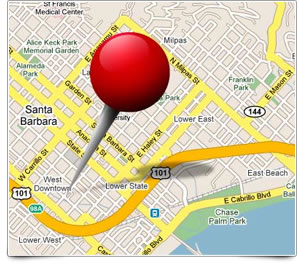Local SEO has been a buzzword in the industry for a few years now. In essence, it refers to the ability of the SEO (search engine optimisation) team to bring client pages back highly in Google search results, according to the physical location of the searcher.
 When you type a search query into Google, you get a mixture of what are known as “organic” search results and localised results from Google Maps. Algorithm updates may alter the saturation of one versus the other, to the point where localised results get the preponderance in a basic search.
When you type a search query into Google, you get a mixture of what are known as “organic” search results and localised results from Google Maps. Algorithm updates may alter the saturation of one versus the other, to the point where localised results get the preponderance in a basic search.
The result of this is that a person searching, in Exeter, for a clearly identifiable product or service – like MOTs, to pull an example at random out of the bag – gets a list of local results, backed up with a Google map showing him or her where the business in question is, in relation to his or her registered postcode.
Bear in mind that the optimisation industry has known about, and been using, local SEO techniques for some years already.
It is worth noting that all search engine optimisation is done through a combination of information and guesswork. Google’s algorithms can change without announcement, as happened with the Panda and Penguin updates of 2012 – which shook the foundation of many big name websites. Optimisation professionals are constantly watching algorithm changes, and may also use their expert knowledge to forecast where Google and the other search engines are likely to go next.
In theory, every single garage providing MOTs is in competition with every other garage providing MOTs. This would be true if the world, like the internet, were an essentially geography-free environment, into which people could go to get their MOTs without being bounded by (for example) the sea, or national borders.
So in actuality, the world is divided into much smaller segments, where local businesses compete with each other for the custom that can reasonably be expected to spread itself over a specific catchment. In MOT terms, that probably means a single town, or a group of smaller towns and villages clustered around a larger centre.
Local SEO assumes that anyone looking for an MOT online, within an identifiable geographic area, will look only for service providers convenient for that location. As a result, it aims to define the target market, and the competition for that market , in much more manageable terms.
When a client company is fighting over keywords only with brands that exist within a 40 mile radius, it is much more likely to see a noticeable return on higher investment. That is, if you are only trying to win top spots against 20 other service providers, it makes more financial sense for you to spend bigger on SEO for core keywords than it would if you were up against the whole world.
Google’s algorithm changes tend to make the search engine act more like a human being. The goal is to return SERPs that match the intentions of the searcher. Local SEO reflects the fact that a searcher’s intentions are often localised.
About the author:-
Tom Brown is a SEO specialist. He is well aware of Google place listing and social media works. Follow him through Google+
